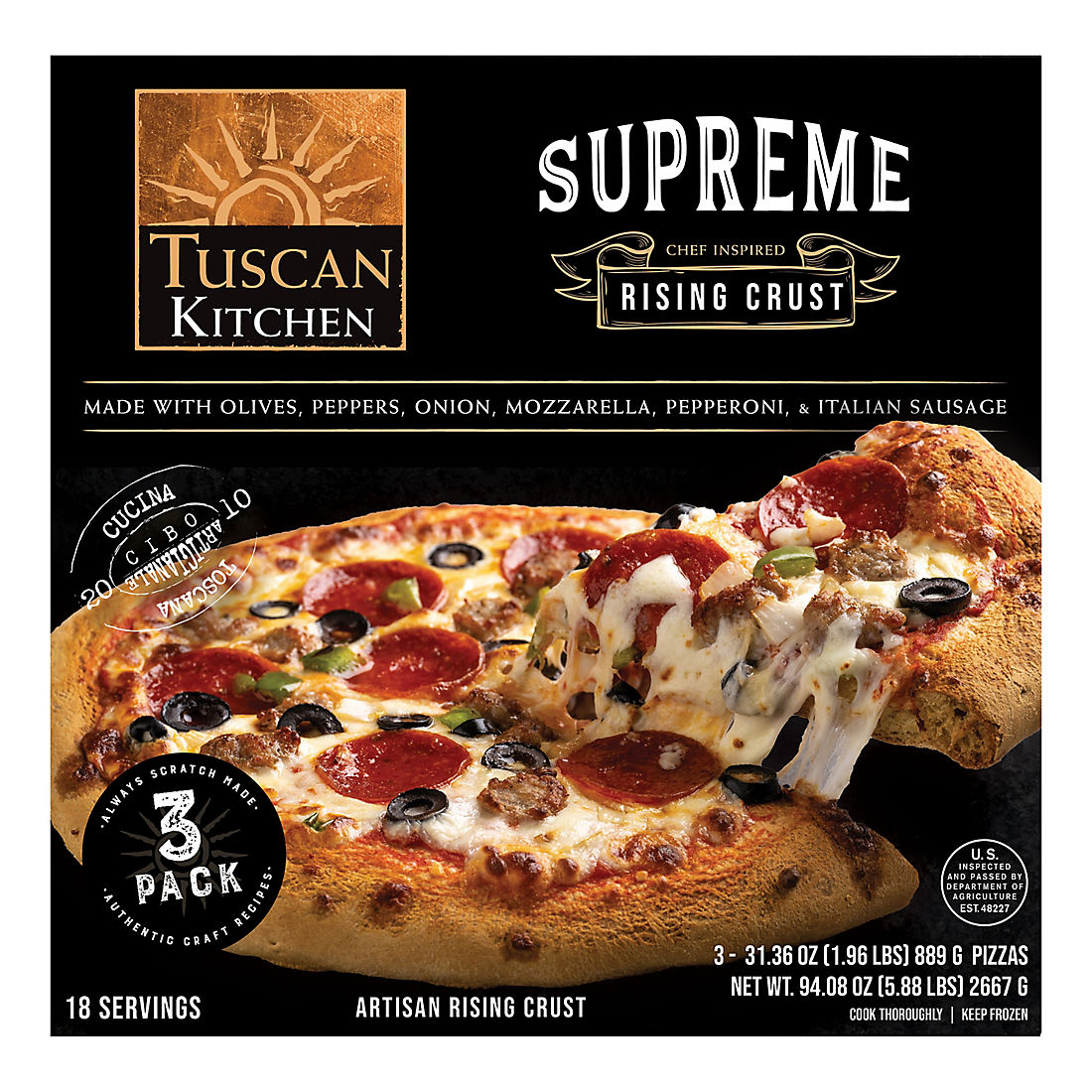Italians do not traditionally put onion in pizza. Pizza, with its crispy crust and mouthwatering toppings, is undoubtedly one of Italy’s most famous culinary creations.
Many variations of this beloved dish exist worldwide, with each country adding its unique touch. However, when it comes to authentic Italian pizza, simplicity and minimalism are key. Italians prioritize using fresh and quality ingredients that complement each other harmoniously, allowing the flavors to shine through.
While onions serve as popular ingredients in various cuisines, they do not usually find a place on traditional Italian pizza. Instead, Italians tend to focus on classic toppings like fresh tomatoes, mozzarella cheese, basil, and various cured meats. To truly appreciate the art of authentic Italian pizza, it’s essential to understand its traditional toppings and resist the temptation to add onions.
The Authentic Italian Pizza
Traditional Ingredients In Italian Pizza
Italian pizza is famous worldwide for its exquisite taste and traditional flavors. One of the key aspects that make Italian pizza truly authentic is the use of high-quality, fresh ingredients. Italians take immense pride in their pizza-making craft and follow a time-honored tradition of using only the finest ingredients.
These traditional ingredients lend an unmistakable flavor to Italian pizzas:
- San Marzano Tomato Sauce: Made from real San Marzano tomatoes, this rich and flavorful sauce serves as the base for an authentic Italian pizza.
- Extra Virgin Olive Oil: Known for its distinct taste, this oil adds a delightful aroma and enhances the overall flavors of the pizza.
- Mozzarella di Bufala: Made from the milk of water buffaloes, this creamy and luscious cheese is a staple in Italian pizzas, adding a delicate flavor profile.
- Fresh Basil: Fragrant and aromatic, fresh basil leaves are sprinkled over the pizza before baking, infusing it with a delightful herbal essence.
- Homemade Dough: Pizza dough in Italy is typically made from a simple combination of flour, water, yeast, and salt. This produces a thin, crispy crust that serves as the perfect canvas for the toppings.
Pizza Varieties In Italy
Italy boasts an incredible diversity of pizza varieties, each region putting its unique spin on the classic dish. Here are some popular pizza varieties you can find in different parts of Italy:
| Pizza Variety | Description |
|---|---|
| Margherita | This iconic pizza showcases the true essence of Italian flavors with its simple toppings of tomato sauce, mozzarella, and fresh basil. |
| Quattro Stagioni | Divided into four sections, each representing a season, this pizza combines various ingredients such as artichokes, olives, mushrooms, and prosciutto to offer a symphony of tastes. |
| Capricciosa | A delightful burst of flavors, this pizza is topped with tomatoes, mozzarella, mushrooms, artichokes, olives, and ham, satisfying even the most discerning taste buds. |
| Napoletana | Originating from Naples, this pizza features a generous dose of tomato sauce, mozzarella di bufala, anchovies, and oregano. It is recognized as one of the oldest and most traditional Neapolitan styles. |
These are just a few examples of the incredible pizza varieties that can be found in Italy. Each region has its specialties and unique twists on traditional Italian pizza.

Common Toppings In Italian Pizza
Italian pizzas commonly feature a variety of toppings that may include onion, among other ingredients. The addition of onion brings a burst of flavor to the pizza, enhancing the overall taste.
Basic Toppings In Italian Pizza
When it comes to Italian pizza, there are a few basic toppings that you can always expect to find. These classic ingredients are what give Italian pizza its iconic flavors and have made it a favorite around the world.
The basic toppings frequently found on Italian pizza include:
- Mozzarella cheese: This creamy and stretchy cheese is a staple of Italian pizza.
- Tomato sauce: Made using ripe tomatoes and a blend of herbs, the tomato sauce forms the base of the pizza.
- Extra virgin olive oil: Drizzled over the pizza before or after baking, the olive oil adds a rich and fruity flavor.
- Fresh basil: Known for its distinct aroma, basil leaves are often added as a garnish to enhance the pizza’s taste.
Variations In Toppings Across Italy
In different regions of Italy, variations in pizza toppings can be found, reflecting the local tastes and culinary traditions. Here are a few examples of regional differences in Italian pizza toppings:
| Region | Variations in Toppings |
|---|---|
| Naples | Popular in Naples are the pizzas Margherita, topped with buffalo mozzarella, San Marzano tomatoes, and fresh basil, and the classic Neapolitan pizza, known for its simplicity with just mozzarella, tomato sauce, olive oil, and fresh basil. |
| Rome | In Rome, you may find pizzas topped with ingredients like artichokes, pecorino cheese, prosciutto, and arugula, offering a variety of flavors and textures. |
| Sicily | Sicilian-style pizza often features toppings such as anchovies, capers, olives, and Sicilian oregano, bringing a touch of brininess and earthiness to the table. |
It’s important to note that while each region has its distinct toppings, the basic ingredients, like mozzarella and tomato sauce, remain consistent throughout Italy.
So, whether you’re in Naples, Rome, Sicily, or any other part of Italy, you can be sure to experience the authentic flavors of Italian pizza, each with its exciting twist in toppings.
Onion In Italian Pizza
Italian pizza does not typically include onion as a topping, as it is not a traditional ingredient in Italian pizza recipes.
Onion in Italian Pizza
When it comes to pizza, Italians are known for their passion and dedication to quality ingredients. One of the most debated topics in the pizza world is whether or not Italians traditionally put onion in their pizza. In this blog post, we will explore the historical use of onion in Italian pizza and discuss the regional variations that exist across Italy.
The Historical Use of Onion in Italian Pizza
The history of pizza in Italy dates back centuries, and the use of onion in pizza can be traced back to ancient times. Onions have been a staple ingredient in Italian cuisine for centuries, and they were commonly used in traditional pizza recipes. Italians valued the flavors and aromas that onions brought to their pizzas, enhancing the overall taste experience.
Over time, as pizza evolved and various regional styles emerged, the use of onion in pizza became more diverse. Some areas embraced onions as a traditional topping, while others chose to exclude them. This created a variety of regional variations across Italy, each with its unique culinary heritage.
Regional Variations of Onion in Italian Pizza
In Italy, regional variations play a significant role in determining the ingredients used in pizza. Different regions have specific preferences and traditions when it comes to the toppings they use, including onion.
Here is a breakdown of the regional variations of onion in Italian pizza:
1. Neapolitan Pizza: Neapolitan pizza, the quintessential Italian pizza, traditionally includes onion in its toppings. The sweetness and crunchiness of the onion complement the flavorful tomato sauce and creamy mozzarella, creating a delicious balance of flavors.
2. Roman Pizza: In contrast, the traditional Roman pizza, also known as “pizza al taglio,” typically does not include onion. Roman pizza focuses more on simplicity and uses fewer toppings, allowing the quality of the crust and sauce to shine.
3. Sicilian Pizza: Sicilian pizza is renowned for its thick, fluffy crust and a generous amount of toppings. In some variations, onion is a common topping, lending its unique flavor and texture to the pizza. This adds an extra layer of complexity to the overall taste profile.
4. Northern Italian Pizza: In the northern regions of Italy, such as Lombardy and Piedmont, the use of onion in pizza is less common. These regions prefer to highlight other ingredients, such as cured meats and cheeses, in their pizza recipes.
In conclusion, the use of onion in Italian pizza varies depending on the region and the specific pizza style. While it may not be a universal topping across Italy, the inclusion of onion in pizza adds depth and richness to the overall flavor profile. Whether you prefer your pizza with or without onion, exploring the regional variations allows you to discover the diverse and delicious world of Italian pizza.

Credit: www.bjs.com

Frequently Asked Questions On Do Italians Put Onion In Pizza?
Do Italians Put Onion In Pizza?
Yes, Italians sometimes put onion on pizza as a topping. It adds a sweet and savory flavor that complements other ingredients. While it may not be as common as traditional toppings like tomato sauce and cheese, onion can be a delicious addition to a pizza.
What Other Toppings Do Italians Put On Pizza?
Italians have a wide variety of toppings they put on pizza. Some popular options include fresh tomatoes, basil, mozzarella cheese, Italian sausage, mushrooms, and olives. Each region in Italy has its unique pizza toppings, so the choices are endless!
Is Onion A Traditional Ingredient In Italian Pizza?
While onion may not be considered a traditional ingredient in Italian pizza, it is still used in certain regional styles. For example, the Neapolitan pizza, which originated in Naples, typically does not include onion. However, in other regions like Rome or Sicily, you might find onion as a topping option.
Why Do Some Italians Put Onion On Pizza?
Adding onion to pizza can provide a pleasant taste and texture contrast. The sweetness of the onion can balance the flavors of other ingredients, such as salty meats or tangy sauces. It also enhances the overall complexity of the pizza, making it a unique and enjoyable dining experience.
Conclusion
It is clear that onions play a significant role in Italian cuisine, but when it comes to pizza, the use of onions varies. While some Italians do put onions on their pizza, it is not a typical or traditional practice.
Ultimately, the choice to put onions on pizza is a personal preference and varies from region to region. Whether you prefer a traditional Margherita or a pizza with onions, the beauty of Italian cuisine lies in its diverse interpretations and flavors.

As the author of the “Ultimate Pizza Guide: Recipes, Tips & Secrets Revealed,” I’m dedicated to sharing my love for pizza and empowering others to create delicious homemade pizzas with ease. Join me on a journey to uncover the secrets to perfecting your pizza game!



